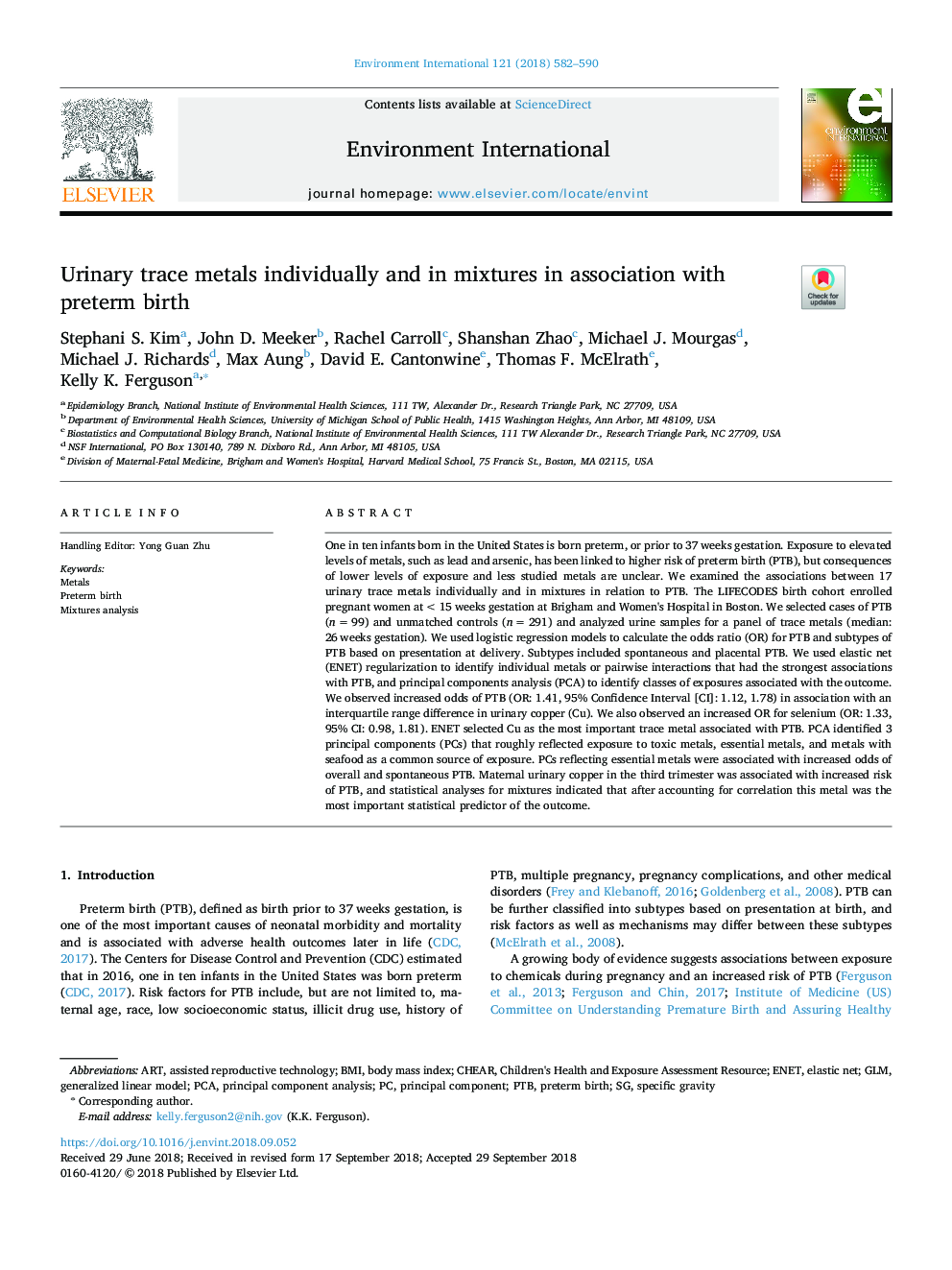| کد مقاله | کد نشریه | سال انتشار | مقاله انگلیسی | نسخه تمام متن |
|---|---|---|---|---|
| 11030458 | 1646304 | 2018 | 9 صفحه PDF | دانلود رایگان |
عنوان انگلیسی مقاله ISI
Urinary trace metals individually and in mixtures in association with preterm birth
ترجمه فارسی عنوان
فلزات ردیابی ادرار به صورت جداگانه و در مخلوط با تولد زودرس
دانلود مقاله + سفارش ترجمه
دانلود مقاله ISI انگلیسی
رایگان برای ایرانیان
کلمات کلیدی
موضوعات مرتبط
علوم زیستی و بیوفناوری
علوم محیط زیست
شیمی زیست محیطی
چکیده انگلیسی
One in ten infants born in the United States is born preterm, or prior to 37â¯weeks gestation. Exposure to elevated levels of metals, such as lead and arsenic, has been linked to higher risk of preterm birth (PTB), but consequences of lower levels of exposure and less studied metals are unclear. We examined the associations between 17 urinary trace metals individually and in mixtures in relation to PTB. The LIFECODES birth cohort enrolled pregnant women at <15â¯weeks gestation at Brigham and Women's Hospital in Boston. We selected cases of PTB (nâ¯=â¯99) and unmatched controls (nâ¯=â¯291) and analyzed urine samples for a panel of trace metals (median: 26â¯weeks gestation). We used logistic regression models to calculate the odds ratio (OR) for PTB and subtypes of PTB based on presentation at delivery. Subtypes included spontaneous and placental PTB. We used elastic net (ENET) regularization to identify individual metals or pairwise interactions that had the strongest associations with PTB, and principal components analysis (PCA) to identify classes of exposures associated with the outcome. We observed increased odds of PTB (OR: 1.41, 95% Confidence Interval [CI]: 1.12, 1.78) in association with an interquartile range difference in urinary copper (Cu). We also observed an increased OR for selenium (OR: 1.33, 95% CI: 0.98, 1.81). ENET selected Cu as the most important trace metal associated with PTB. PCA identified 3 principal components (PCs) that roughly reflected exposure to toxic metals, essential metals, and metals with seafood as a common source of exposure. PCs reflecting essential metals were associated with increased odds of overall and spontaneous PTB. Maternal urinary copper in the third trimester was associated with increased risk of PTB, and statistical analyses for mixtures indicated that after accounting for correlation this metal was the most important statistical predictor of the outcome.
ناشر
Database: Elsevier - ScienceDirect (ساینس دایرکت)
Journal: Environment International - Volume 121, Part 1, December 2018, Pages 582-590
Journal: Environment International - Volume 121, Part 1, December 2018, Pages 582-590
نویسندگان
Stephani S. Kim, John D. Meeker, Rachel Carroll, Shanshan Zhao, Michael J. Mourgas, Michael J. Richards, Max Aung, David E. Cantonwine, Thomas F. McElrath, Kelly K. Ferguson,
